Do You Ned To Add Anything To The Soil In Yard For A Garden
Gardeners often disregard the impact soil has on the health and vigor of their plants. Soil preparation isn't the most thrilling aspect of planting a garden, but it's certainly one of the most important. If your soil isn't right, your garden will struggle to reach its full potential.
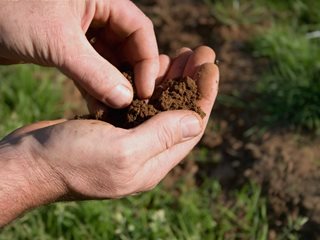
Start by digging up a scoop of soil and examining its texture in your hands. Photo by: Sharon Kingston / Shutterstock
"A garden is a reflection of the quality of its soil. Gardens filled with beautiful soil have a vitality about them that we can almost feel," says landscape designer and author Jan Johnsen.
Achieving that vitality requires understanding the chemistry and composition of your soil and creating the perfect environment for fertile plant growth. Good soil management is a continual process, but once you attend to the basics, your soil will do most of the work itself.
6 Basics of Healthy Soil
- Know Your Soil Type
- Test the pH of Your Soil
- Amend with Organic Matter
- Enlist the Help of Microorganisms
- Mulch with Care
- Favor a No-Till Approach
1. Know Your Soil Type
Before you begin planting, dig up a scoop of soil and take a look at its texture. Is it dense and heavy and clump together when wet? Or is it loose and free flowing, like play sand? Maybe it's somewhere in between, feeling somewhat sticky but crumbling easily, like a freshly baked cookie.
All soils are a mixture of mineral particles — primarily clay, sand, and silt. Often they will contain higher amounts of one type of particle relative to the others. That doesn't make them bad growing mediums, but it will affect their density, drainage rate, and capacity to hold nutrients.
With each soil type, there are trade-offs. Here's a quick overview:
- Clay soils have tiny, dense particles that hold large reserves of moisture and nutrients. However, clay soil also drains slowly and can become hard and compacted when dry.
- Sandy soils are just the opposite, with large particles that water moves through easily — along with important nutrients.
- Silts have fine particle sizes that pack together tightly, inhibiting drainage and air circulation.
- Loam is the ideal soil for most plants; it contains a balance of all three mineral particles and is rich in humus (what's left after organic matter decomposes).
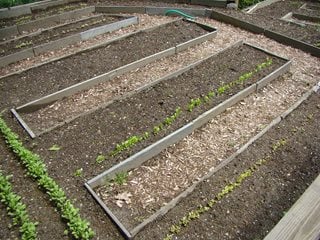
If you have poor soil, consider building a raised garden bed and filling it with a well-balanced soil mix. Photo by: Jan Johnsen.
Adding organic matter is the best way to make your soil more loam-like and improve its structure. Another option is to build a raised garden bed and fill it with a well-balanced soil mix. Or take the simple approach by growing plants that do well in your soil type, such as choosing drought-tolerant plants for sandy soils. You can grow a garden successfully in any soil, as long as the plant's roots are accustomed to the conditions.
2. Test the pH of Your Soil
The pH of your soil is one of the most important factors in determining its fertility. If your soil is too alkaline (with a pH above 7.5) or to acidic (with a pH below 5.5), that can make a big difference in which nutrients are available to your plants.
Although most plants will tolerate a wide range of pH levels, they prefer slightly acidic soils (with a pH of 6 to 7) because important nutrients such as nitrogen, phosphorus, potassium, calcium and magnesium dissolve readily in that environment. In soils that are too acidic or alkaline, your plants may get too much of some nutrients and not enough of others.
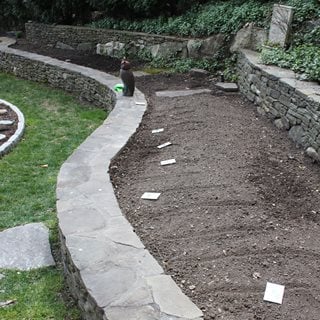
When testing the pH of your soil, take samples from different sites in your garden because the pH can vary even within a small backyard. Photo by: Jan Johnsen.
How do you test your soil pH? Here are two options:
- DIY Soil Test Kit: For the quickest results, you can buy an instant-read soil test kit or electronic tester (such as this one from Amazon).
- Professional Soil Analysis: But if you're starting a new garden, it's a good idea to have your soil tested professionally. The soil samples will be sent to a lab, which will analyze your soil pH and nutrient content as well as its capacity to retain nutrients. Try the Soil Savvy Test Kit, also available on Amazon.
Be sure to take soil samples from different sites in your garden because the pH can vary quite a bit, even within a small backyard. If your pH reading is low (acidic), you can correct it by adding lime to your soil. If it's too high, add powdered sulfur or aluminum sulfate. Another option is to choose plants that will thrive at the natural pH level of your soil, such as acid-loving rhododendrons or azaleas.
3. Amend with Organic Matter
Any type of soil can be improved by the addition of organic matter.
Here are three common amendments:
- Composted yard waste
- Manure
- Fallen leaves
In sandy soils, organic matter improves water-holding capacity and the retention of nutrients. In clay soils, it loosens up the minerals that become sticky when the soil is wet and hard when the soil is dry. And in all soils, it provides a rich supply of slow-release nutrients for your plants as well as food for beneficial soil organisms. Over time, a well-amended soil will provide most of the nutrients your plants need, reducing fertilizer requirements.
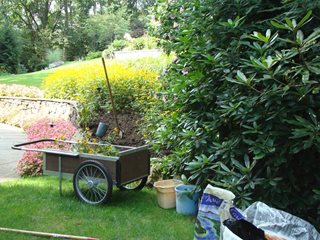
Most soil amendments work best if you work them into the soil in the fall, so they are well decomposed before planting the following spring. Photo by: Jan Johnsen.
Most soil amendments work best if you work them into the soil in the fall, so they are well decomposed before planting the following spring, explains organic gardener Elizabeth Stell, author of Secrets to Great Soil . To get the organic matter down to root level, use a garden fork to mix the material into the top 4 to 6 inches of soil. In vegetable gardens, which usually contain annual or biennial plants, you can amend your soil each season. Perennial gardens should be amended prior to planting so you won't disturb the plant roots. Many perennials must be dug up every few years for division, providing a good opportunity to work in additional organic matter.
4. Enlist the Help of Microorganisms
Don't simply think of soil as dirt. Think of it as microscopic world teeming with a vast array of organisms that breathe life into your garden. These organisms in your soil ecosystem — including earthworms, insects, fungi, and a multitude of beneficial bacteria — act as Mother Nature's recycling crew, converting dead leaves and plant debris into readily available nutrients. They also help to aerate the soil and convert organic matter into humus.
Know Your Soil History
The history of your garden and how the soil has been treated — or mistreated — can also make a big difference in what it will take to improve it, says soil scientist Keith Reid, in his book Improving Your Soil . "Have you purchased a property in the country and want to create a garden in an old pasture? Do you want to improve a garden that you have cultivated for many years with lots of TLC? Or are you trying to start a garden in what passes for soil in a new subdivision? Know the history of your garden, make a note of what plants have been grown, what fertilizer or manure has been applied, and what did well or poorly. These details will help reveal the potential limitations of your soil."
"To enlist the help of microorganisms, create favorable conditions. As these are the same conditions that promote optimum plant growth, you'll be doing your garden a double favor," says Stell. To encourage soil life, she recommends keeping your soil evenly moist and well aerated and minimizing the use of pesticides. "Many of these are toxic to soil life as well as to whatever insects you're trying to control," she says. Also avoid the use of concentrated fast-acting fertilizers, which can harm earthworms and other soil organisms. Instead, use less-concentrated organic fertilizers and slow-release formulas.
5. Mulch with Care
Mulching allows you to add organic matter to the soil without disturbing plant roots because you simply spread it over the surface and let it decompose naturally.
Mulch also helps to:
- Retain moisture
- Suppress weed growth
- Keep the soil cooler during the summer
- Improve soil aeration
But mulch also has its pitfalls, especially if you use the wrong type of mulching material and apply it too thickly. It can change the chemical composition of the soil and leach micronutrients that are harmful to plants. It can also create continually moist conditions that lead to fungal diseases of plant roots, especially in wet soils and humid climates.
A variety of organic materials can make effective mulches. However, mulches aren't created equal when it comes to how they impact the biological activity of the soil and how quickly they break down. To learn more about the pros and cons of mulching and the best types of mulches to use in residential gardens, see How to Mulch and Avoid Mistakes.
6. Favor a No-Till Approach
Gardeners have widely varying opinions about the benefits of tilling. Many are convinced that turning over and breaking up the soil every year creates a favorable environment for their plants because it helps to mix in organic matter and improve drainage. Others say that tilling is a waste of time and may actually do more harm than good — and often they are right.
Tilling has a number of drawbacks. It can encourage the growth of weeds by bringing dormant seeds to the surface and exposing them to sunlight. It can disturb the beneficial burrowing activities of earthworms — the best free labor you can get for loosening and aerating your soil. It can also interfere with the activity of important soil microorganisms. Despite these negatives, tilling is still a viable option if you need to work organic matter and nutrients into sticky clay soil or a new garden bed that's heavily compacted. After that initial deep tilling, you can often let nature take its course to improve the structure of your soil.
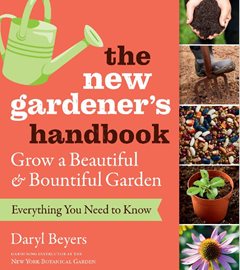
NEW TO GARDENING?
If you're not sure where to start, the Garden Design editors recommend The New Gardener's Handbook: Everything You Need to Know to Grow a Beautiful and Bountiful Garden, by Daryl Beyers, an expert from the New York Botanical Garden. You'll find easy-to-follow information on:
- Soil preparation
- Planting
- Watering
- Pruning
- Fertilizing
- and more!
Buy now on Amazon.
RELATED:
Composting 101: How to Compost
Potting Soil 101
Garden Fertilizer 101
Do You Ned To Add Anything To The Soil In Yard For A Garden
Source: https://www.gardendesign.com/soil/
Posted by: byrdboashe.blogspot.com

0 Response to "Do You Ned To Add Anything To The Soil In Yard For A Garden"
Post a Comment